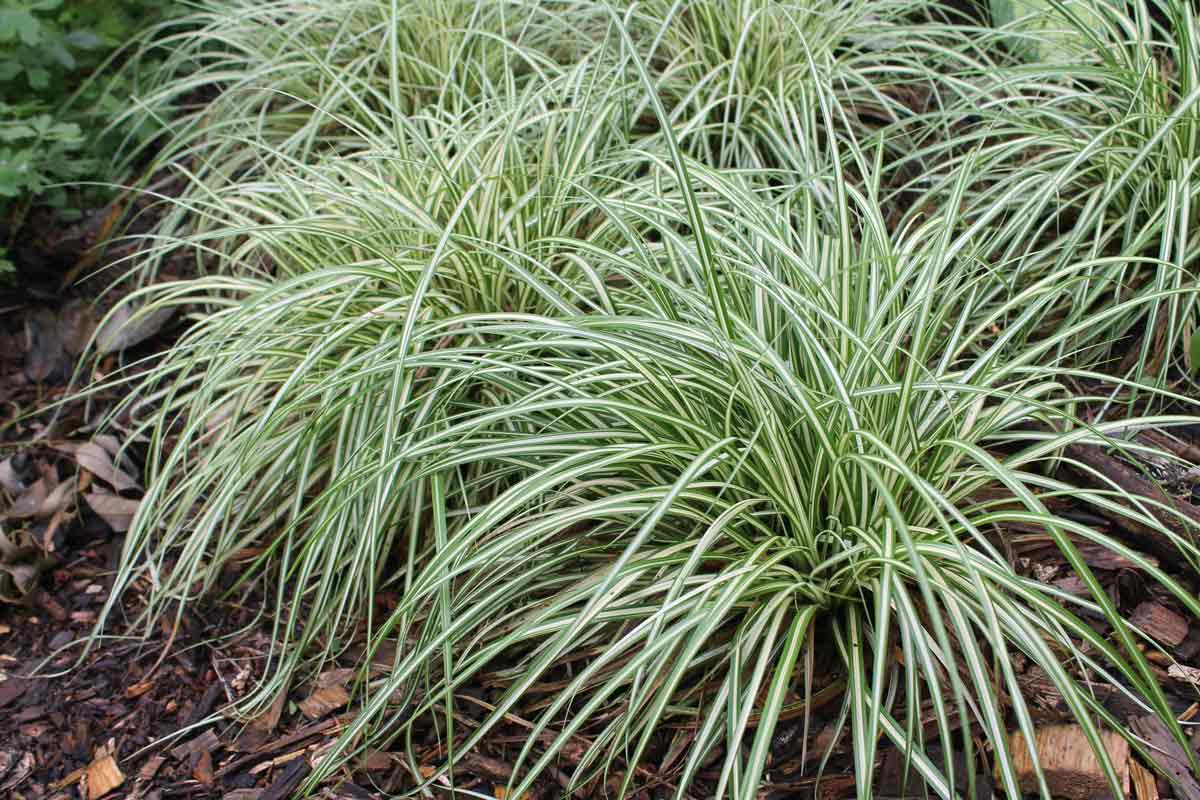Sedums and Sedges Part 1: All About Sedums
Sedums are great options for gardeners who are looking for low-maintenance plants for their gardens.

'Silver Sceptre' is a sedge variety with silvery-edged blades. George Weigel
In gardeners’ never-ending quest to find good-looking plants that thrive with minimal care, sedums and sedges together have taken one of the top spots. The two also happen to look good together and are broken into two growth habits – low-growing varieties spread along the ground, maxing out at a height of just a few inches or less, while upright varieties form tall, upright clumps that create a mass of tiny flowers.
Sedges look and feel very similar to grass, but are only grass-like. While most of the 2,000 species in the sedge (Carex) family prefer shade to sun and damp to drought, sedges are generally more adaptable to diverse situations than most grass plants. They come in a mix of leaf colors, leaf textures (thin to broad), and heights (six inches to three feet, although most check in about a foot tall). Like grasses, sedges produce tan to buff-colored plumes. Runners expand sedge clumps but not aggressively, and like sedums, most sedges are hardy in Zones 5-9.
When planting sedges, you should aim to plant them in damp areas of your landscape. Since sedges prefer moist soil, aim to plant them in areas that are either consistently moist or are in part to full shade. As you add new sedges to your landscape, be sure to give them plenty of water to allow their roots to take hold.
The best time to plant sedges is in the early spring, ensuring they won’t be at risk of frost and will avoid the summer heat. Sedges will tolerate partial sun but will best flourish in shady areas.
Several native sedges make excellent groundcovers in shady or wooded settings, including Pennsylvania sedge, Appalachian sedge, palm sedge, and Eastern star sedge.